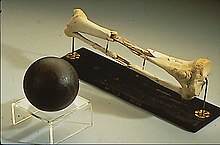
The Battle of Gettysburg was a three-day battle in the American Civil War fought between Union and Confederate forces between July 1 and July 3, 1863, in and around Gettysburg, Pennsylvania. The battle, which was won by the Union, was the Civil War's turning point, ending the Confederacy's aspirations to establish an independent nation, and the war's bloodiest battle, claiming some 50,000 combined casualties.

George Gordon Meade was a United States Army Major General who commanded the Army of the Potomac during the American Civil War from 1863 to 1865. He fought in many of the key battles of the Eastern theater and defeated the Confederate Army of Northern Virginia led by General Robert E. Lee at the Battle of Gettysburg.

Richard Stoddert Ewell was a career United States Army officer and a Confederate general during the American Civil War. He achieved fame as a senior commander under Stonewall Jackson and Robert E. Lee and fought effectively through much of the war. Still, his legacy was clouded by controversies over his actions at the Battle of Gettysburg and the Battle of Spotsylvania Court House.
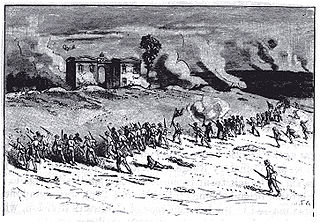
Cemetery Hill is a landform on the Gettysburg Battlefield that was the scene of fighting each day of the Battle of Gettysburg. The northernmost part of the Army of the Potomac defensive "fish-hook" line, the hill is gently sloped and provided a site for American Civil War artillery.

Daniel Edgar Sickles was an American politician, soldier, and diplomat.

Little Round Top is the smaller of two rocky hills south of Gettysburg, Pennsylvania—the companion to the adjacent, taller hill named Big Round Top. It was the site of an unsuccessful assault by Confederate troops against the Union left flank on July 2, 1863, the second day of the Battle of Gettysburg, during the American Civil War.

Isaac Ridgeway Trimble was a United States Army officer, a civil engineer, a prominent railroad construction superintendent and executive, and a Confederate general in the American Civil War. He was born in Virginia, lived in Maryland for much of his adult life, and returned to Virginia in 1861 after Maryland did not secede. Trimble is most famous for his role as a division commander in the assault known as Pickett's Charge at the Battle of Gettysburg. He was wounded severely in the leg during that battle, and was left on the field. He spent most of the remainder of the war as a prisoner, and was finally paroled on April 16, 1865, one week after Robert E. Lee surrendered the Army of Northern Virginia following the Battle of Appomattox Court House.
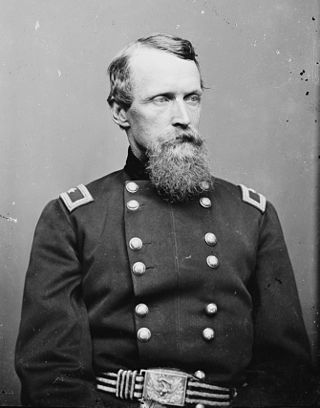
David Bell Birney was a businessman, lawyer, and a Union general in the American Civil War.

There were four formations in the Union Army designated as III Corps during the American Civil War.
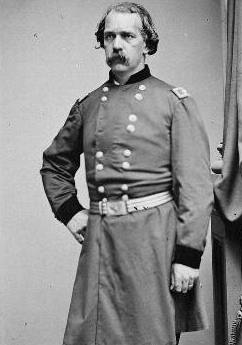
John Henry Hobart Ward was an American soldier who fought in the Mexican–American War and in the American Civil War. Ward joined the army in 1842 and fought in multiple battles in the Mexican–American war, including the Battle of Monterrey, where he was wounded. After leaving the army, he served successively as the assistant commissary general and commissary general for the state of New York. With the outbreak of the American Civil War in 1861, Ward rejoined the army, and became the colonel of the 38th New York Infantry Regiment. Ward and his regiment were engaged in the First Battle of Bull Run and in several battles in the Peninsula campaign. He was promoted to command a brigade after the Battle of Chantilly in September 1862.

Cemetery Ridge is a geographic feature in Gettysburg National Military Park, south of the town of Gettysburg, Pennsylvania, that figured prominently in the Battle of Gettysburg, July 1 to July 3, 1863. It formed a primary defensive position for the Union Army during the battle, roughly the center of what is popularly known as the "fish-hook" line. The Confederate States Army launched attacks on the Union positions on the second and third days of the battle, but were driven back both times.

The first day of the Battle of Gettysburg during the American Civil War took place on July 1, 1863, and began as an engagement between isolated units of the Army of Northern Virginia under Confederate General Robert E. Lee and the Army of the Potomac under Union Maj. Gen. George G. Meade. It soon escalated into a major battle which culminated in the outnumbered and defeated Union forces retreating to the high ground south of Gettysburg, Pennsylvania.

During the second day of the Battle of Gettysburg Confederate Gen. Robert E. Lee attempted to capitalize on his first day's accomplishments. His Army of Northern Virginia launched multiple attacks on the flanks of the Union Army of the Potomac, commanded by Maj. Gen. George G. Meade. The assaults were unsuccessful, and resulted in heavy casualties for both sides.

Lord Uxbridge's leg was shattered, probably by a piece of case shot, at the Battle of Waterloo and removed by a surgeon. The amputated right limb became a tourist attraction in the village of Waterloo, Belgium, where it had been removed and interred.

Leopold von Gilsa was a career soldier who served as an officer in the armies of Prussia and later the United States. He is best known for his role in the misfortunes of the XI Corps in the Army of the Potomac during the American Civil War, particularly at the battles of Chancellorsville and Gettysburg, where many of his men were unjustly accused of cowardice.
Archibald Livingston McDougall was an officer in the Union Army during the American Civil War who commanded the 123rd New York Volunteer Infantry early in the war and subsequently led a brigade at the Battle of Gettysburg.

The state of medical knowledge at the time of the Civil War was extremely primitive. Doctors did not understand infection, and did little to prevent it. It was a time before antiseptics, and a time when there was no attempt to maintain sterility during surgery. No antibiotics were available, and minor wounds could easily become infected, and hence fatal. While the typical soldier was at risk of being hit by rifle or artillery fire, he faced an even greater risk of dying from disease.
Adoniram Judson Clark commanded a New Jersey battery in the American Civil War.

Greenlief Thurlow Stevens (1831–1918) commanded the 5th Maine Battery in the American Civil War. His battery is commemorated by a monument on Stevens' Knoll, named for him, on the Gettysburg Battlefield. It was among the first parts of the battlefield purchased for preservation.
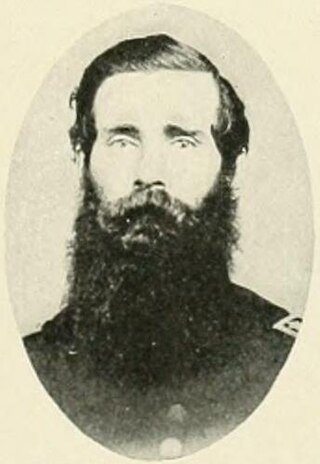
Byron Root Pierce was an American dentist who served as a Union Army general in the American Civil War. He was noted for fighting at First Manassas and during the Peninsula and Seven Days Campaigns. Pierce participated in all of the major battles in the East.
